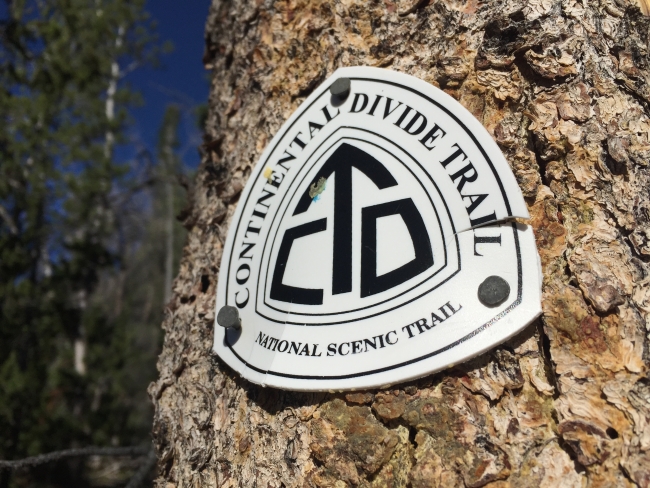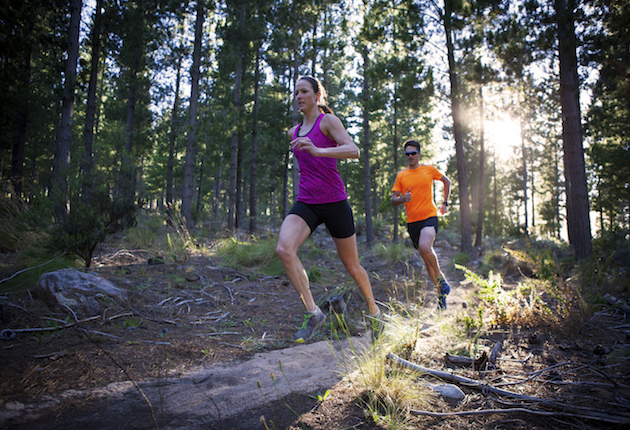As an outdoor journalist, it’s my job to cover issues in the woods and on the water. I stay in shape for rugged-terrain stories by running trail. An uncomfortable amount of trail. I’m beyond Boston, and that’s no brag. That’s crazy talk. It takes more than 20 miles to shut me up and calm me down, with 45 miles being the farthest I’ve ever ran in one day.
Yes, 45 miles. In 13 hours.
It’s awkward to translate what happens during a long-distance run, but I can tell you this, some of those miles cross an area my husband will hunt this fall. Having his wife run elk territory ahead of him holds tremendous value.
The grass
The sun isn’t up yet, but dawn is laying a blue hue on the hillside. I turn my headlamp off and zip up my shell. It’s always coldest right before sunrise. I can see my breath leaving my lungs even and strong. I can hear my shoes shuffling through the grasses coated in morning moisture. The rolling pile of mounds ahead of me hold real potential for hunting. They’re all south-facing.
I know big game animals seek the salvation of south-facing slopes when snow piles up. Winter white melts faster on the south side; the green shoots I’m running through now will fade to brown, but will still be worth eating in desperate times. Elk won’t be desperate when my husband comes through here in four months, but if there’s snow by then, these slopes may be what they seek for an easier commute.

Looking into Idaho via the Continental Divide Trail in central Idaho. (Photo: Kris Millgate/Tight Line Media)
The trees
I’m in the timber by the time the sun rises over ridges warranting sunglasses. Running the Continental Divide Trail affords me amazing views of Idaho and Montana. I see a wide stretch of each state on either side of me, and I stop to stare often. I stop for good reason: In some places, the trail is a narrow single track shouldered by sheer drop-off. I must be sure to pay attention to the placement of my feet. Wavering on cliffs could land me in Montana when my home is in Idaho.
I enjoy the view from 10,000 feet above both states, but I’m most interested in the Idaho side. That’s where my husband will hunt elk in late fall. Certain sections of my run are above elk country, but when I’m in the trees I know I’m right where elk want to be.
I scramble over logs and think about elk tromping their way through like a freight train in no-stop mode. Bulls are clumsy like that when they’re in pursuit of a cow or a challenger. My husband should have no trouble hearing elk approach. Seeing them among the trunks will be the tricky part.
The water
The convenient aspect of running the Continental Divide Trail is signage. CTD is well marked. Nothing fancy, but sufficient. Some trail indicators are rough slashes shaped like an “i” carved in the tree trunks. Those predate modern material. Others are newer metal triangles placed way out of snow’s reach.

The Continental Divide Trail is well marked with old slashes in tree bark and newer triangles of metal placed well above the snow line. (Photo: Kris Millgate/Tight Line Media)
Another marker of significance is harder to spot but just as vital. Old, faded, brown forest service signs with “Water” scratched in the wood are pegged on evergreens every once in a while. I make sure to note the mileage for those. They mark natural springs.
For humans, it’s a stop and boil deal; for elk, it’s a lick and leave. Often. I can tell by the rubs around the watering hole. There are several at my height and taller. They’re high, wide, and scratched with purpose. I swipe my hand across the width of one. Three hands wide. There are bulls in here, and they are big. My husband is in for an adventurous hunt.
I’m excited to hear about it, but he’s going to hear about my adventure first. I know hills to glass, water holes to watch, and rubs worth a repeat. If I can run my husband’s hunt as part of my 45-miler, he can certainly haul in here, follow my scouting tips, and bring out an elk for our freezer.
Kris Millgate is an outdoor journalist based in Idaho Falls, Idaho. See more of her work at tightlinemedia.com.

